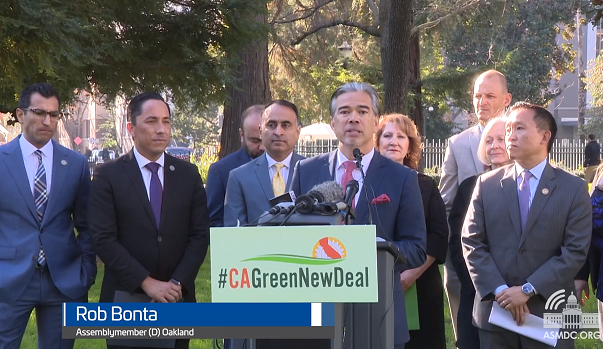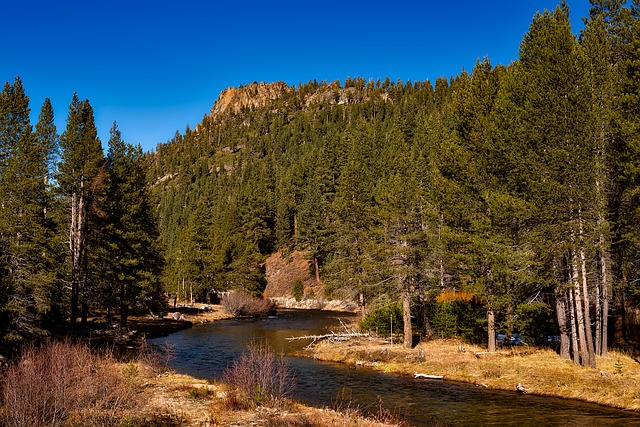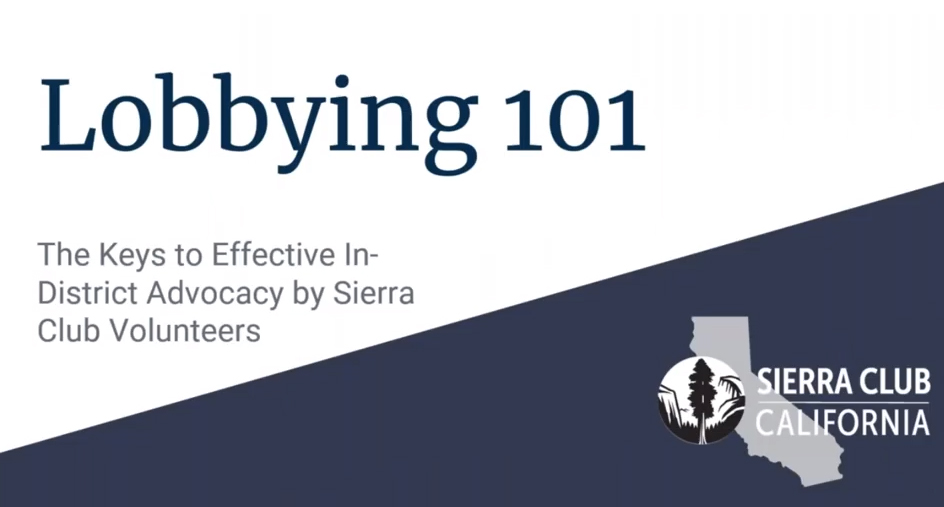
The Green New Deal Comes to California
Board of Forestry Approves Misguided Vegetation Management Plan
Sign Up for In-District Lobbying Webinar
California Continues its Battle Against Single-use Waste
The Green New Deal Comes to California
By Kathryn Phillips

A California version of Green New Deal legislation was introduced on the first day of this new legislative year.
At a press conference, Assemblymember Rob Bonta described the California Green New Deal as a “bold transformation bill that addresses the existential threat of climate change while prioritizing equity throughout.”
Assembly Bill 1839 is authored by assemblymembers Rob Bonta, David Chiu, Ash Kalra, Eloise Reyes and Shirley Weber, and co-authors include assemblymembers Todd Gloria, Marc Berman, Richard Bloom, Kansen Chu, Robert Rivas, Mark Stone, and Buffy Wicks.
The Asian Pacific Environmental Network (APEN) is sponsoring the bill, a coalition of environmental justice, environmental, social justice, labor and other groups have worked on its development, and Sierra Club California has a support position on it.
The bill as drafted provides a declaration of 12 principles that address climate change, education, social justice, racism, labor justice and health access. It also lists other findings that boost the notion that addressing equity goes hand in hand with addressing climate solutions.
The bill also contains a section that suggests goals to be achieved to actualize the principles.
Generally, it lays a foundation for other future legislation that will advance the goals.
Over the next 30 days, while the bill awaits assignment to policy committees, the bill’s author will develop amendments to help make certain California’s Green New Deal clears the legislature.
Stay tuned to your email over the next several weeks for more about how you can help move this bill forward.
Board of Forestry Approves Misguided Vegetation Management Plan
By Daniel Barad

While most of us were still eating leftover gingersnaps, on December 30 the Board of Forestry approved a wildlands management plan that endangers California’s famous chaparral, disregards ecosystem diversity, and ultimately isn’t likely to protect Californians from the most destructive fires.
Work on the California Vegetation Treatment Program (CalVTP) and its accompanying Programmatic Environmental Impact Report (PEIR), which make up the plan, was initiated more than a decade ago. In the interim, climate change has arrived and the nature of wildfires has changed.
Unfortunately, the final version of the plan doesn’t reflect the knowledge gained over the last decade. Moreover, it may have been too ambitious to begin with by assuming that a single environmental review could adequately cover a state as geographically and ecologically diverse as California.
A decade ago, wildfire season in the state lasted just several months. Now, as the impacts of climate change set in--including drier seasons and unusually high winds in unexpected places--the season has become nearly year round. Likewise, the emphasis on protecting communities by focusing on fire breaks and thinning of distant forests, has been proven ineffective in protecting homes.
Nevertheless, the new wildfire plan emphasizes conducting more than 250,000 acres of tree removal, prescribed burns and other fuel reduction every year on over 6 million acres of California, even though, as the CalVTP flatly states, that work won’t prevent. the devastation associated with wind-driven wildfires. Six wind-driven wildfires were responsible for 87% of the damage associated with California’s 2018 wildfires.
The plan also endangers the state’s chaparral ecosystems by failing to recognize that they have a fire tolerance that is distinct from traditional forests. Chaparral ecosystems around the state cannot tolerate frequent prescribed burns. Additionally, thinning of chaparral opens up opportunities for more flammable invasive grasses to take hold.
Fire experts, like respected former U.S. Forest Service scientist Jack Cohen, argue that the best way to protect lives and property from wildfire threats is to create limited defensible space and harden homes through measures like attic vent ember guards.
The CalVTP does not include any incentives or requirements for these preventative measures.
In the last two years, while the CalVTP was going through final development, a coalition of environmental groups, including Sierra Club California, presented written comments on the plan raising concerns about its inadequacy.
Unfortunately, most of our concerns were not addressed in the final document.
Sign Up for In-District Lobbying Webinar
By Molly Culton

Legislators care about what their constituents think. They know that your vote is what keeps them in office.
One of the most important things Sierra Club volunteers can do to help pass good environmental legislation is to reach out to their legislators at home. Meeting with your representatives in-district is one of the most effective ways to influence change and make sure your voice is heard regarding the issues you care most about.
It’s also a great way to build a relationship with your elected officials and let them know which issues are a top priority for their constituents.
Sierra Club California will be hosting three webinars this month to train volunteers on best practices for In-District Lobbying. Below are the dates and times of the scheduled webinars, with links to register:
Thursday, Jan. 16; 12:00PM- 12:30PM
Register here
Wednesday, Jan. 22; 2:00PM- 2:30PM
Register here
Thursday, Jan. 23; 12:00PM- 12:30PM
Register here
For more information, you can email Molly.Culton@sierraclub.org
California Continues its Battle Against Single-use Waste
By Lauren Cullum

New year, same fight: cutting plastics and other single-use products from California’s waste stream.
In 2019, the state legislature ended its session without voting on Senate Bill 54 and Assembly Bill 1080, the California Circular Economy and Pollution Reduction Act, introduced by Assemblymember Lorena Gonzalez and Senator Ben Allen.
The proposed law set forth in the two bills will require that by 2030, 75% of consumer products and foodware sold in the state be packaged in material that is recyclable, reusable or compostable. These bills are coming back and Sierra Club California and our allies will be working hard to make sure they get passed before the legislature adjourns again in August.
Meanwhile, under the “Bring Your Own” bill (AB 619), which went into effect on January 1, restaurants can allow customers to use their own reusable containers for food. Since AB 619 does not mandate the use of reusables, it will be up to the restaurants and customers to maximize the benefits of this new law.
It also authorizes vendors at concerts and festivals to serve food in reusable containers rather than using single-use disposables. This is a huge step toward reducing single-use foodware at festivals and avoiding the hordes of trash left behind at these events.
Please help spread the news and encourage others to bring reusables with them to restaurants and festivals.
Follow Us:
  |
Thank you for being a part of our work! Consider making a monthly donation. You may securely donate online or by sending a check to Sierra Club California at 909 12th Street, Suite 202, Sacramento, CA 95814.
